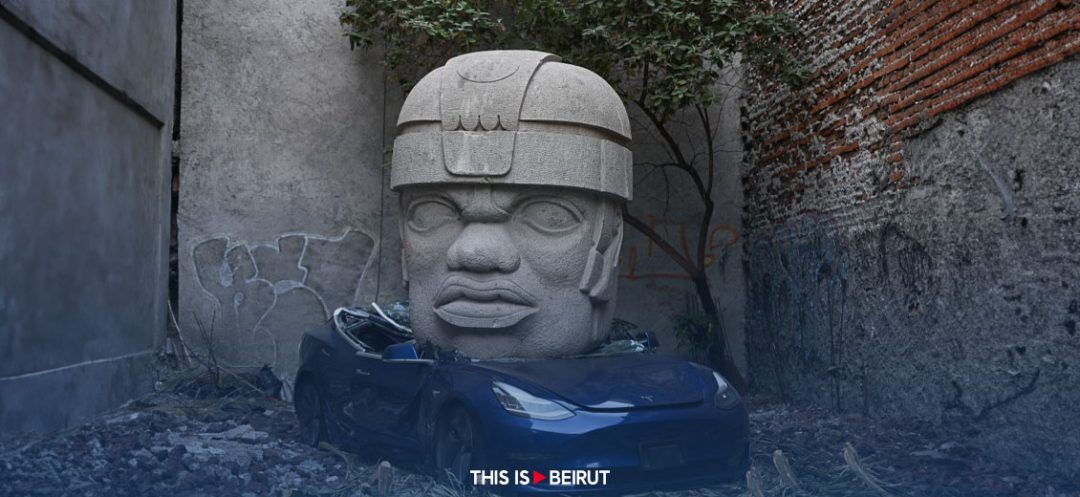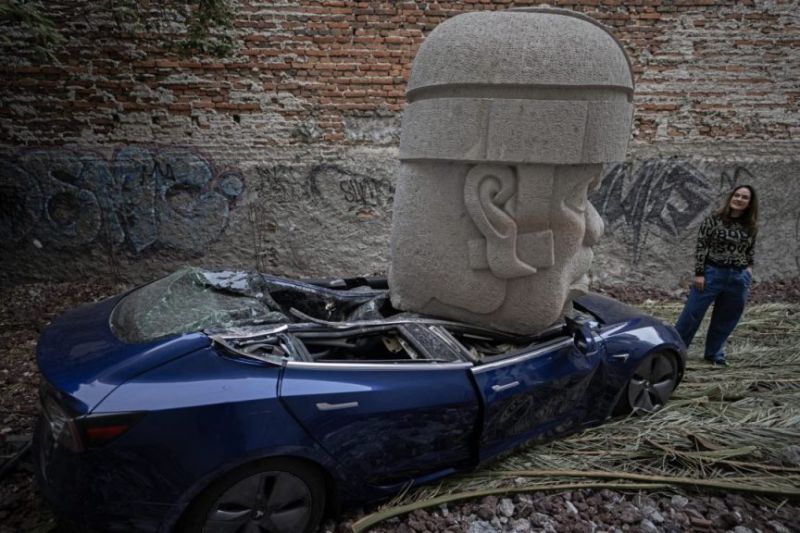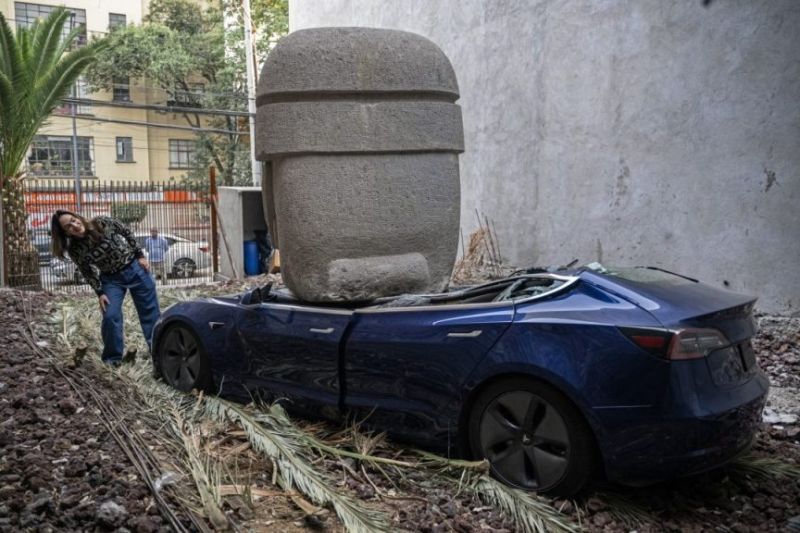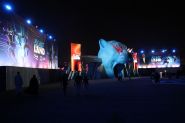
©Photo by Carl De Souza /AFP
In the heart of Mexico City, a striking art installation captured public attention, blending modern technology with ancient heritage in a provocative statement. Mexican artist Chavis Marmol created a spectacle that’s hard to ignore: a $40,000 Tesla car crushed under the weight of a colossal pre-Hispanic-inspired sculpture.
At 42, Marmol, whose surname translates to “marble” in Spanish, has never owned a car and prefers to travel by bicycle. His latest creation, a nine-ton sculpture, was meticulously placed atop a blue Tesla Model 3 using a crane. This particular model is one of the many produced by the company of American billionaire Elon Musk, whom Marmol openly mocks through his artwork. Speaking from Spain, where he is attending an exhibition, Marmol explained his intention, “Look what I do to your sacred car with this wonderful head, which is bigger than you and the creeping technologies,” highlighting the massive scale and cultural significance of his sculpture over modern technological advancements.
 Photo by Carl De Souza /AFP
Photo by Carl De Souza /AFP Photo by Carl De Souza /AFP
Photo by Carl De Souza /AFPMarmol’s sculpture draws inspiration from the colossal heads crafted by the Olmecs, the earliest known civilization in Mexico, dating back 3,000 years. These remnants of Olmec culture are primarily found in the southeastern part of the country, with notable exhibitions, including one in Paris in 2021, showcasing their historical importance. The installation has been set up in the trendy Roma district of downtown Mexico City, adding a modern twist to the area’s artistic landscape.
Just a year ago, Musk announced the establishment of a “megafactory” in Monterrey, the industrial capital of northern Mexico, sparking a mix of excitement and controversy. This context adds another layer to Marmol’s artwork, prompting viewers to ponder the significance of Tesla’s presence in Mexico and Musk’s broader influence.
The artwork, now housed at Colima 71, a venue that straddles the line between a traditional hotel and an art center, has been described as surreal and alien-like by some critics. A video capturing the moment the sculpture crushes the car’s roof has gone viral, highlighting the dramatic interaction between the ancient and the modern. Prior to the installation, the car’s batteries were removed to prevent any accidents, showcasing the careful planning behind the seemingly spontaneous act of artistic defiance.
Securing the Tesla, which cost $40,000 on the used market, was the first hurdle. The identity of the patron who funded the project remains a secret, adding an air of mystery to the already intriguing installation. The next challenge was sourcing the right stone. Initially weighing 12 tons, the stone was meticulously carved down to nine tons, forming the striking head with its large eyes and thick lips that now dominate the crushed vehicle.
Margarita Ongay, the artistic director of Colima 71, expressed her admiration for Marmol’s work, questioning the deeper meanings and emotions it evokes regarding Tesla, its impact on Monterrey, and the inspiration derived from Musk’s ventures.
Despite the potential criticism for destroying a valuable car, Marmol remains unapologetic and views the act as a testament to the transformative power of art. His sentiment resonates in a country where “VIP art” (Video, Installation, Performance) faces scrutiny. Critics like Avelina Lésper denounce it as a facade of contemporary art, driven by mediocrity, economic speculation and favoritism. Yet, Ongay defends the impact of art, arguing that if it stirs emotions or thoughts, it fulfills its purpose, regardless of financial cost.
Ultimately, the audacious image of the crushed Tesla aims to catch the attention of Elon Musk himself. Ongay muses about the potential reaction from Musk, expressing excitement at the thought of him seeing his manufactured vehicle in such a transformed state. This daring installation not only challenges the boundaries between ancient and modern, and art and technology, but also serves as a bold statement in the ongoing conversation about cultural heritage and contemporary innovation.
With AFP
Read more




Comments